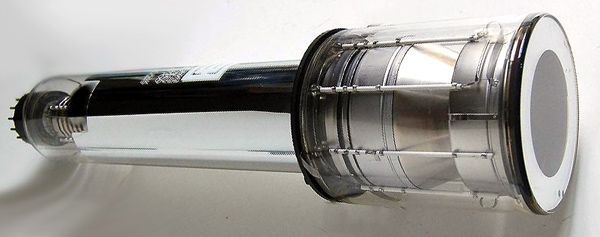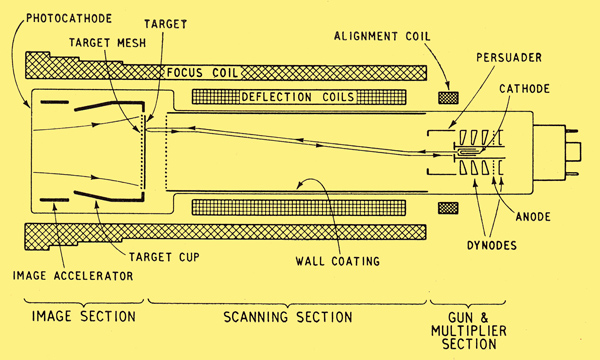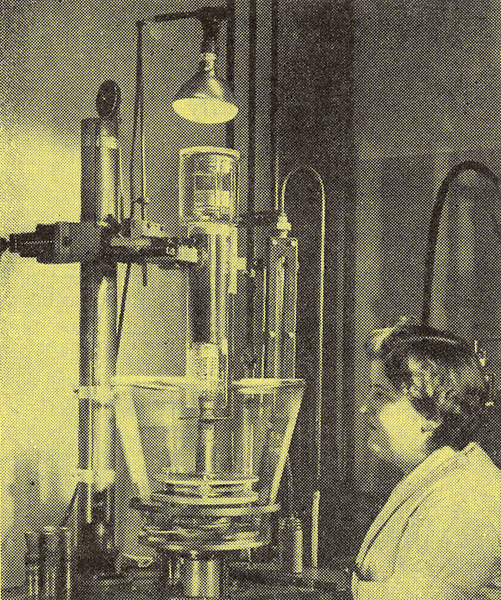|

The improvement of television pictures is in the main a gradual process of development in all links of the chain. At times, however, there occur more marked steps and one of these is the introduction of a new image orthicon camera tube by the English Electric Valve Company. Having an overall diameter of 4.5 inches compared with the 3 inches of the earlier model that was released in 1950, the tube has roughly three times the target area and as a result is capable of much higher resolution.
The resolution is claimed to be adequate for the French 819-line television system and it can, therefore, easily meet 625- and 525-line requirements. At first sight, therefore, it would seem that the tube would be of unnecessarily high performance for British 405 line television. There is, however, an indirect benefit to be gained from the increased resolution. The new tube will give full resolution on 405 lines with little or no high-frequency compensation; as a result, a higher signal-to-noise ratio can be obtained. Further advantages claimed for the tube are better rendering of grey tones and a reduction of halo, edge effect and ghosts.

Simplified diagram showing the main features of the new 4= inch English Electric image orthicon.
In its basic operating principle the new image orthicon is much the same as the earlier English Electric 3-in tube. The main difference is in the use of a larger target with a working area three times as big as the present one. This means, in the first place, that the scanning beam is smaller in relation to the size of the target charge pattern, so that the resolution is increased. Secondly, the increase of area results in the mesh of the target being relatively finer. Both these things mean improved definition.
Furthermore, the use of a larger target gives an increase of storage capacitance, and this, in turn, improves the signal-to-noise ratio, which becomes about 6 db better than with the older tube. As an outcome of this greater signal-to-noise ratio it will be possible to obtain a more pleasing gradation of grey tones. The gamma of the tube, representing the light-input/signal-output relationship, is claimed to be unity, and it will now be possible to reduce this electrically to a value, which will offset the high gamma of the receiving CRT.
Normally, an increase in the size of the target would call for a corresponding increase in the size of the photo-cathode, and as a result larger and more expensive lenses would have to be used to form the optical image. This has been avoided in the new tube by keeping the photo-cathode the same size as before and putting an electron-optical magnifying lens between it and the target. The spread-out of the photo-electron pattern from the photo-cathode is actually achieved by a combination of electrostatic and electromagnetic fields.
In order to introduce this magnification (a three-fold increase in area) it has been necessary to make the image section of the tube somewhat longer than before. An incidental advantage of this is that the photo-electrons from the photo-cathode now perform two complete spirals under the influence of the focusing coil instead of coming to a focus at the end of the first one. As a result 'ghosts' or displaced duplicate images, due to secondary emission, are eliminated from the picture.

The final sealing-in of the tube with rotating gas flames.
|